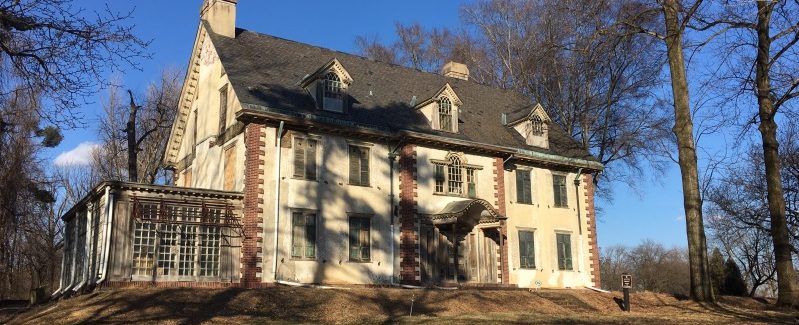Housenick Park
By John Marquette
Park User
 What happens when people neglect what they’ve built? At Housenick Park, people can watch it happen. The majesty of the seasons, combined with the impermanence of building materials, offers a four-season show with free admission. It’s my secret pleasure, a jewel of almost one hundred acres only five miles north of my home. Once the estate of Archibald Johnston, the city of Bethlehem’s first mayor, it’s now a public park in the heart of the Lehigh Valley.
What happens when people neglect what they’ve built? At Housenick Park, people can watch it happen. The majesty of the seasons, combined with the impermanence of building materials, offers a four-season show with free admission. It’s my secret pleasure, a jewel of almost one hundred acres only five miles north of my home. Once the estate of Archibald Johnston, the city of Bethlehem’s first mayor, it’s now a public park in the heart of the Lehigh Valley.
Housenick Park (and the adjacent Archibald Johnston Conservation Area, operated jointly with Housenick Park as a single public amenity) is a paradise for birders. Scores of species either fly over or make seasonal or permanent homes within the park’s boundaries. Other Pennsylvania wildlife is abundant and protected. Its herd of deer and their nesting places are in plain sight. Groundhogs, squirrels, chipmunks, and foxes roam at will. The estate’s paved roads remain as part of the park’s trail system and are accessible to walkers and wheelchair users alike.
One of Johnston’s great contributions to the city of Bethlehem was the dedication of Saucon Park, a great example of an active, mixed-use public park situated along a creek. Bethlehem Township’s Housenick Park, however, has few of the traditional park amenities, with no pool, play equipment, barbecue grills, or sports fields. It’s a passive park with trails leading from the new parking lot to the family’s former home and beyond.
The Johnston estate, known as Camel’s Hump Farm, was put together through the purchase of many individual parcels of land in the late 1910s and beginning of the 1920s. Johnston commissioned an architect to design a large home on a bluff overlooking Monocacy Creek to take advantage of the views the location afforded. He and his wife Estelle moved into their new 6,000-square-foot home in 1923. Over the next 25 years, he made significant changes to the property, including homes for his daughter and son, stone retaining walls along the creek, lime kilns, a boat house and launches, a spring and pump house, several bridges, and a system of paved roads.
Property owners in pre-World War II America were far freer to change the land and water under their care than is possible today. The modifications Johnston made to the banks of Monocacy Creek, legally “waters of the Commonwealth” and one of fewer than 60 limestone streams in Pennsylvania, included significant alterations to the course and beds of the creek. In the years during the Great Depression, his industriousness and wealth provided employment to scores of local masons, carpenters, and contractors during the dark years of the Depression.

Since Johnston’s time, many departments of Commonwealth of Pennsylvania, especially the DCNR and DEP, have recognized the importance of shared resources. More importantly, when possible, they have worked with local governments to make places like Housenick Park safe, accessible spaces to appreciate the beauty of nature.
Housenick Park is worthy of a walk every month of the year. The Monocacy runs clear and cold in winter. The upstream snowmelts and storm runoff in spring and summer cleanse the creek and provide a soft undercurrent of sound, punctuated by the call of redtail hawks circling overhead. In fall, the trails are covered with leaves from the now-mature trees planted by Johnston as part of the estate’s master horticultural plan in the 1920s. I’m grateful to Janet Johnston Housenick and William D. Housenick for their gifts of this land to the people of the Lehigh Valley to enjoy now and into the future.
The park is testimony to a basic truth: nature is greater than humanity’s attempts to alter it. Johnston attempted to bend nature to do his will. He redirected and walled the waters. He graded and paved the soil. He built buildings and bridges on a scale both grand and small. His passion for architecture, engineering, and farming ended with his death, and nature began to reclaim its own. The gentle power of nature is on view from dawn to dusk every day at Housenick Park.

